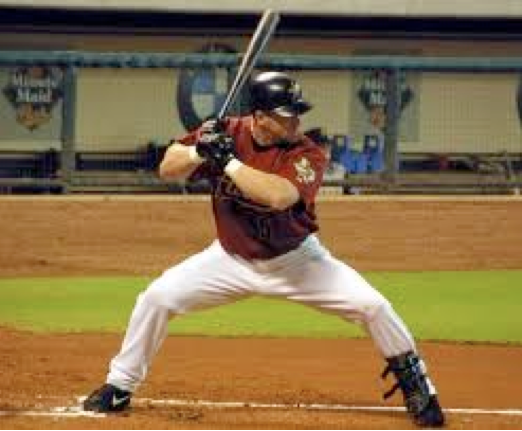Watch a baseball game on TV. Chances are out of the 9 different hitters you see on each team you will see nine different stances. Some have their hands high above their shoulders, some have a low stance while others take a slight flexed stance, standing higher.
How a hitter sets himself is a very individualized and unique thing like their finger print.
What all these professional hitters do have in common though is wrist and fore arm strength, spectacular core strength, and above average hand eye coordination.
Despite these shared characteristics each hitter has a different stance while doing one thing similar. Their stance is comfortable to them, and allows them to get their hands back in the correct position while allowing for a fluid transition of weight shift to hit the ball with the greatest amount of power and with the least amount of effort.
The best stance is a simple stance that sets the foundation for minor adjustments.
More often than not, Since the stance is our foundation, problems normally stem from our stance.
Here are a few batting tips that will help in developing this foundation.
For example, if you struggle getting on top of the ball, your hands may be placed too low for you to handle pitches up in the zone, which may force you to hit balls in the air. Making an adjustment in your stance may be more important than in your swing.
So does a simple generic stance guarantee success?
Well how many simple and generic stances do you see in the big leagues? Like what was stated earlier you’ll probably see nine different hitters and nine different stances.
Somehow these hitters find the proper hitting position before they start their swing. Joe Morgan used to have his hands above his shoulder and bob his elbow up and down like he was imitating a chicken.
Tony Batista would literally face the pitcher before getting his hands back. Cal Ripken Jr changed his stance in his career more times then he washed his jock strap. Wait I take that back he probably didn’t wear a jock strap because he probably didn’t wear a cup. His hands were golden.
These hitters all had very unique stance but were record breakers. They all did what was comfortable to them but got to the right position before they started to swing. They all had specific hitting drills that stimulated bat-speed and the never deviated from that approach.
So no matter if you are wiggling your bat over your head, laying it on your shoulder, or doing the soldier boy, before the pitcher comes to deliver the ball, you have gotten into your ready position. Your weight shift has begun slightly back, your hands have positioned themselves begins the rear shoulder.
Your core is prepared and ready to explode. Your foot is ready to make its unique stride based on the type of hitter you are. And your body is working fluidly to get your foot down in time to start your hands getting through the hitting zone.
Remember a good stance, regardless of what you feel comfortable with doing, allows you to k.i.s.s. (keep it simple stupid)

4 replies to "The best hitting stance for you"
We are on posterous as well!!!!
Was a control pitcher [500+ games] and did okay against any lineup of complete strangers, just pitching to the stances the first time around. That, according to experience built around a Warren Spahn tip: the tip plus my own observations. There's more to it than hand position. Remember always, that strengths and weaknesses usually occur in opposing sets; for instance, a bucket-foot who is helpless low-outside may be unbeatable against inside pitches.
Consistently, the good hitters had vertical alignment of toe-kneecap-shoulder joint. At least, of the rear side. The right vertical setup is easy to get. Starting in fully erect posture; sink STRaight down at least til weight leaves the heels. This gets the vertical alignment right, and balance requires it.
A batter with shoulders behind the line will in striding, veer to the bucket: pitch outside always [never inside].
Batter with shoulders past the line veers the other way: pitch him at the handle.
Batter's head/neck slanting at catcher: eye-high sucker pitches.
Unlevel shoulders [stance through stride]: high front shoulder = high pitch strength/low weakness. Low front shoulder = low strength, high weakness.
found your site on del.icio.us today and really liked it.. i bookmarked it and will be back to check it out some more later
thankyou for the bookmark!!!!! much appreciated!